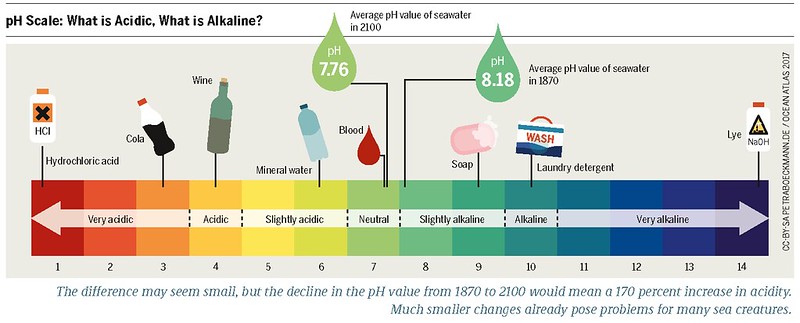The pH of Hydrobromic acid (HBr) in water is a crucial parameter to understand, as it determines the acidity and reactivity of the solution. HBr is a strong acid that completely ionizes in water, releasing hydrogen ions (H+) and making the solution highly acidic. This blog post will explore the calculation of the pH of a 0.025 M HBr solution, the potential contaminants and hazards associated with HBr, and provide relevant resources for further information.
Calculating the pH of a 0.025 M HBr Solution
To calculate the pH of a 0.025 M solution of HBr, we can use the formula:
pH = -log10[H+]
where [H+] is the concentration of hydrogen ions in the solution.
Since HBr is a strong acid, the concentration of hydrogen ions is equal to the concentration of the acid itself, which is 0.025 M. Substituting this value into the formula, we get:
pH = -log10(0.025)
pH ≈ 1.602
This result indicates that the solution is highly acidic, with a pH well below the neutral value of 7.
Potential Contaminants and Hazards
It is important to note that HBr is a highly corrosive and toxic substance that can cause serious harm to the skin, eyes, and respiratory system. Some potential contaminants and hazards associated with HBr include:
-
Corrosivity: HBr is a strong acid that can rapidly dissolve and damage various materials, including metals, rubber, and some plastics. Exposure to HBr can cause severe burns and tissue damage.
-
Toxicity: Inhalation of HBr vapors can irritate the respiratory system and cause coughing, wheezing, and difficulty breathing. Ingestion or skin contact can lead to severe burns and internal damage.
-
Reactivity: HBr is a highly reactive substance that can react violently with many other chemicals, including bases, oxidizing agents, and reducing agents. These reactions can produce hazardous byproducts, such as toxic gases.
-
Environmental Concerns: Improper disposal or spills of HBr can contaminate soil, water, and air, posing a threat to the environment and local ecosystems.
Handling and Storage of HBr
Due to the hazardous nature of HBr, it is essential to handle and store this substance with great care. Some recommended practices include:
-
Personal Protective Equipment (PPE): When working with HBr, it is crucial to wear appropriate PPE, such as chemical-resistant gloves, goggles, and a face shield, as well as a respirator if there is a risk of exposure to vapors.
-
Dilution and Containment: In the event of a spill or exposure, it is recommended to dilute the HBr solution with large amounts of water and contain the spill to prevent further contamination.
-
Storage: HBr should be stored in a cool, dry, and well-ventilated area, away from sources of ignition and incompatible materials, such as bases, oxidizing agents, and reducing agents.
-
Disposal: Proper disposal of HBr and related waste is essential to minimize environmental impact. Consult local regulations and guidelines for the safe disposal of hazardous chemicals.
Conclusion
The pH of Hydrobromic acid (HBr) in water is a crucial parameter to understand, as it determines the acidity and reactivity of the solution. By calculating the pH of a 0.025 M HBr solution, we can see that it is highly acidic, with a pH of approximately 1.602.
However, it is important to note that HBr is a highly corrosive and toxic substance that requires careful handling and storage to prevent harm to individuals and the environment. Proper safety precautions, such as the use of PPE and appropriate containment and disposal methods, are essential when working with HBr.
For more information on the pH of HBr and related topics, please refer to the resources provided at the end of this blog post.
References:
- “Calculating pH of a Strong Acid – Chemistry Problems” by ThoughtCo: https://www.thoughtco.com/calculating-ph-of-a-strong-acid-problem-609587
- “What is the pH of a 0.050 M HBr solution?” by Tyler DeWitt on YouTube: https://www.youtube.com/watch?v=nQT3VjlDjoY
- “pH of Common Acids and Bases” by aqion: https://www.aqion.de/site/ph-of-common-acids

